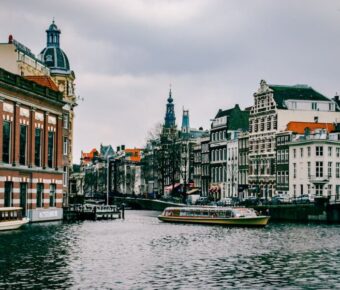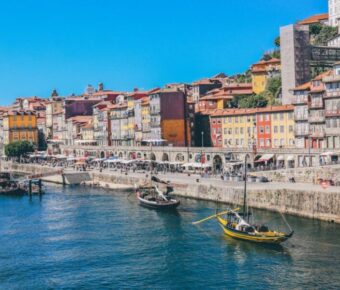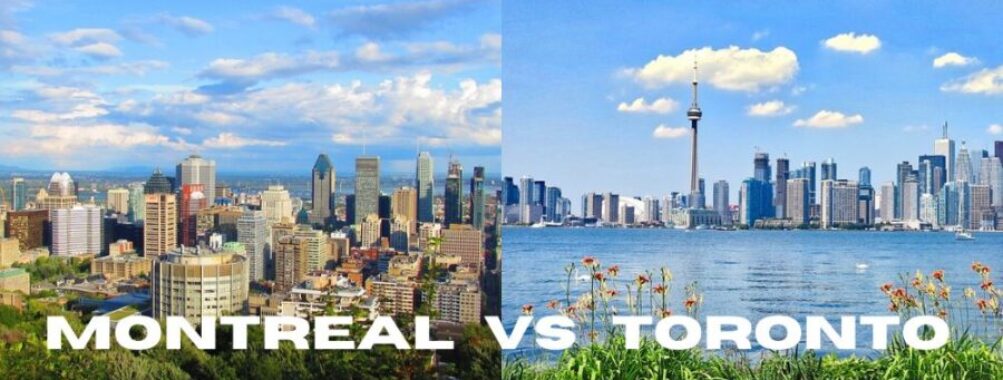
Montreal vs Toronto: 7 Key Differences That Will Surprise First-Time Visitors
Montreal and Toronto stand as Canada‘s largest cities, each offering unique experiences for visitors. These vibrant metropolitan hubs showcase different sides of Canadian culture, from Montreal’s European charm to Toronto’s modern energy. While Montreal captivates with its French heritage, historic architecture, and food scene, Toronto impresses with its multicultural diversity, soaring skyscrapers, and world-class entertainment.
Planning a Canadian adventure often leads travelers to choose between these two distinct destinations. Montreal speaks French and celebrates its Quebec roots with cobblestone streets and iconic festivals throughout the year. Toronto pulses with the energy of Ontario’s business center, featuring gleaming towers and neighborhoods that reflect its status as one of North America’s most diverse cities.
Both cities welcome millions of hotel guests annually, offering countless attractions and activities. Toronto thrives as a global financial hub with endless shopping and dining options. Meanwhile, Montreal preserves its European soul through art, culture, and a relaxed lifestyle that sets it apart from other North American cities.
Table of Contents
- Historical Context and Cultural Significance
- Montreal’s Rich History
- Toronto’s Diverse Heritage
- Economic Factors and Cost of Living
- Housing and Accommodation
- Job Markets and Average Salary
- Living Expenses: Food and Transportation
- Lifestyle and Recreation
- Green Spaces and Public Parks
- Entertainment and Nightlife
- Sports and Leisure Activities
- Culinary Journey Through Cities
- Iconic Foods and Local Delicacies
- Fine Dining and Street Food
- Food Markets and Culinary Tours
- Artistic Expression and Museums
- World-Class Museums and Galleries
- Festivals and Music Scenes
- Street Art and Performing Arts
- Natural Landscapes and City Architecture
- Iconic Buildings and Structures
- Parks and Natural Attractions
- Accessibility and Transportation
- Public Transit Options
- Walking and Cycling Accessibility
- Education, Healthcare, and Quality of Life
- Higher Education Institutions
- Health Services and Safety Records
- Climate and Weather Considerations
- Seasonal Variations and Activities
- Impact of Climate on Lifestyle
- Frequently Asked Questions
- Which city offers a more diverse culinary experience, Toronto or Montreal?
- How do Toronto and Montreal compare in terms of cost of living and salaries?
- In sports, how do the rivalries between Toronto and Montreal teams influence the cities’ cultures?
- When considering walkability and public transport, which city is more accessible for tourists and residents?
- Which city has a stronger presence of French language and culture?
- Can you highlight the unique elements that differentiate the nightlife in Toronto and Montreal?
- Book Your Dream Experience
- More Travel Guides
Historical Context and Cultural Significance
Montreal and Toronto showcase distinct cultural identities shaped by centuries of immigration, trade, and urban development. Each city tells a unique story through its architecture, neighborhoods, and cultural landmarks.
Montreal’s Rich History
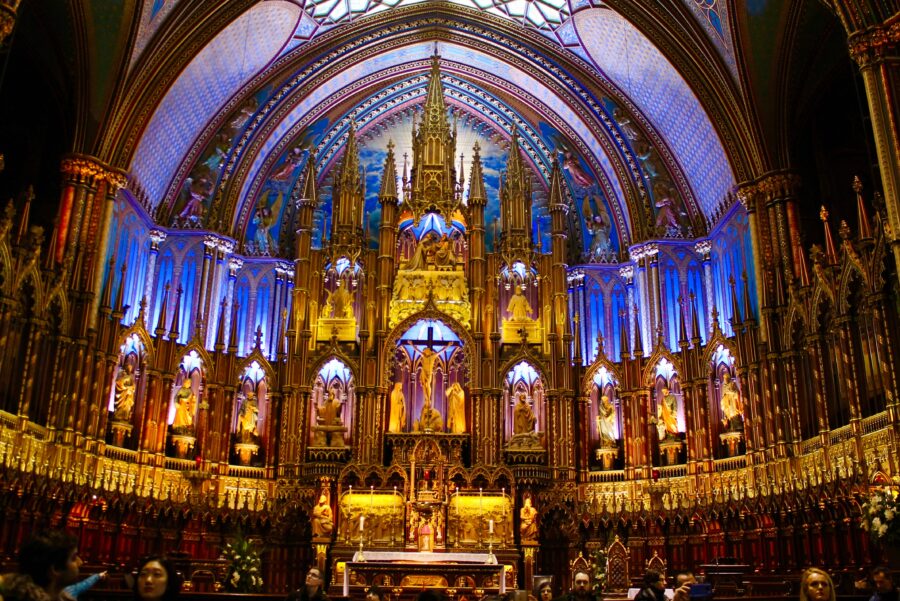
The French heritage of Montreal shines through its cobblestone streets and historic buildings. In 1642, the city started as a missionary colony and grew into a vital trading post. The heart of this legacy lives in Old Montreal, where historic stone buildings line narrow streets.
The stunning Notre-Dame Basilica stands as a masterpiece of Gothic Revival architecture. Built in 1829, its deep blue ceiling sparkles with golden stars, making it a must-see landmark.
Montreal’s museums bring its past to life. The Pointe-à-Callière Museum sits on actual archaeological ruins, showing layers of the city’s growth from Native settlements through French colonization.
Toronto’s Diverse Heritage

Toronto gained its current name from the Mohawk word “tkaronto,” meaning “where trees stand in water.” The city grew from a small trading post into Canada’s largest urban center.
Casa Loma tells tales of Toronto’s wealthy past. This Gothic Revival castle, built in 1914, lets visitors step into early 20th-century luxury living.
The Distillery District preserves Victorian industrial architecture. Once home to the largest whiskey maker in the world, its brick buildings now house art galleries, shops, and restaurants.
Toronto’s neighborhoods reflect waves of immigration. Little Italy, Chinatown, and Greektown showcase how different cultures shaped the city’s identity through food, festivals, and community spaces.
Economic Factors and Cost of Living
Living costs differ significantly between Canada’s two largest cities. Toronto ranks as more expensive across most categories, with residents needing about 24% more income to maintain a similar lifestyle to Montreal.
Housing and Accommodation

Rent stands out as the biggest cost difference between these cities. A one-bedroom apartment in downtown Toronto costs around $2,300 per month, while similar units in Montreal go for $1,500.
Montreal’s rental market offers more affordable options in trendy neighborhoods like Le Plateau-Mont-Royal and Mile End. Many apartments come with unique architectural features like spiral staircases and exposed brick walls.
Toronto’s housing market puts extra strain on renters’ wallets. The city’s high demand and limited supply drive up costs in popular areas like West Queen West and Liberty Village.
Job Markets and Average Salary

Toronto leads in job opportunities, especially in finance, tech, and entertainment sectors. The city hosts more corporate headquarters and startups than Montreal.
Montreal shines in gaming, aerospace, and creative industries. The city attracts companies with lower operating costs and generous tax incentives.
Salaries tend to be 15-20% higher in Toronto. This helps offset the increased living expenses, but many residents still find their money doesn’t stretch as far.
Living Expenses: Food and Transportation

Monthly transit passes cost $156 in Toronto versus $94 in Montreal. Both cities offer extensive public transportation networks with subway systems and bus routes.
Groceries cost about 10% more in Toronto. A typical grocery bill for one person runs around $400 monthly in Toronto compared to $360 in Montreal.
Restaurant prices show similar patterns. A casual dinner for two costs about $80 in Toronto, while Montreal diners might spend $65 for a comparable meal.
Utilities run higher in Toronto due to more extreme temperatures. Monthly bills average $160 for a typical apartment, compared to $130 in Montreal.
Lifestyle and Recreation
Montreal and Toronto offer distinct recreational experiences, ranging from expansive green spaces to vibrant entertainment districts and sports venues. Each city brings its own unique flavor to urban living.
Green Spaces and Public Parks

Mount Royal Park stands as Montreal’s crown jewel, offering stunning city views and year-round activities. The park features walking trails, picnic spots, and a lake for paddling in summer or ice skating in winter.
Toronto’s High Park spans 400 acres with gardens, sports facilities, and a zoo. The park comes alive each spring with cherry blossoms, drawing thousands of visitors.
Both cities maintain extensive bike path networks. Montreal’s paths connect major parks and neighborhoods, while Toronto’s waterfront trail system provides scenic routes along Lake Ontario.
Entertainment and Nightlife

Montreal’s nightlife centers around the Plateau and Mile End districts, known for live music venues and cozy bars. The city hosts major festivals like Jazz Fest and Just for Laughs throughout the year.
Toronto’s Entertainment District buzzes with theaters, clubs, and restaurants. The city’s food scene reflects its cultural diversity, with St. Lawrence Market serving as a hub for local cuisine and fresh produce.
Street art and pop-up events add character to both cities’ cultural landscapes. Montreal tends to have more intimate venues, while Toronto features larger concert halls and performance spaces.
Sports and Leisure Activities

Montreal embraces winter sports with outdoor skating rinks and nearby ski slopes. The Canadiens hockey team draws passionate crowds to the Bell Centre.
Toronto supports major league teams in hockey, basketball, and baseball. The Rogers Centre and Scotiabank Arena host year-round sporting events.
Public recreation centers in both cities offer affordable fitness classes and swimming pools. Toronto maintains more indoor facilities, while Montreal maximizes its outdoor spaces during warmer months.
Culinary Journey Through Cities
Toronto and Montreal each offer distinct food scenes shaped by their unique cultural influences and local traditions. Both cities serve up unforgettable dining experiences, from humble street eats to sophisticated restaurants.
Iconic Foods and Local Delicacies

Montreal’s food identity centers around several must-try classics. The city’s famous poutine combines crispy fries, squeaky cheese curds, and rich gravy. Montreal-style bagels, smaller and sweeter than their New York cousins, are baked in wood-fired ovens at iconic spots like St-Viateur.
The legendary smoked meat sandwiches pack layers of spiced brisket between rye bread slices. These spots often have lines around the block during peak hours.
Toronto’s signature foods reflect its multicultural makeup. The city excels in authentic dim sum, Caribbean roti, and Korean barbecue. Little Italy and Greektown serve up their respective cultural specialties with modern twists.
Fine Dining and Street Food

Montreal’s fine dining scene embraces French techniques while adding local flair. Traditional bistros serve classic dishes like coq au vin and duck confit in cozy settings.
The street food scene thrives in both cities. Toronto’s food trucks offer everything from butter chicken poutine to sushi burritos. Food halls like Assembly Chef’s Hall showcase multiple vendors under one roof.
Street artists often paint murals near popular food spots, adding to the vibrant atmosphere. These artistic touches make dining adventures more memorable.
Food Markets and Culinary Tours

Montreal’s Jean-Talon Market buzzes with local vendors selling Quebec cheeses, fresh produce, and maple products. The market hosts cooking demos and seasonal food festivals.
Toronto’s Kensington Market mixes vintage shops with international grocery stores and cafes. Visitors can sample foods from different cultures within a few blocks.
Food tours in both cities take guests behind the scenes at popular spots. Montreal tours often focus on French-Canadian classics, while Toronto’s highlight different ethnic neighborhoods.
Artistic Expression and Museums
Montreal and Toronto showcase distinct artistic identities through their renowned cultural institutions, diverse art scenes, and creative spaces. Each city brings its own flavor to Canada’s cultural landscape.
World-Class Museums and Galleries

The Art Gallery of Ontario stands as Toronto’s crown jewel of visual arts, housing an impressive collection of Canadian art alongside European masterpieces. Its modern architecture by Frank Gehry adds to its appeal.
The Montreal Museum of Fine Arts takes pride in its extensive collection spanning from classical to contemporary works. With over 45,000 pieces, it draws art lovers from across the globe.
Both cities feature smaller, independent galleries scattered throughout their neighborhoods. The Power Plant in Toronto and Arsenal Contemporary Art in Montreal spotlight emerging artists and experimental works.
Festivals and Music Scenes

Montreal’s International Jazz Festival lights up the city each summer with free outdoor concerts and world-class performances. It’s earned its spot as the world’s largest jazz festival.
Toronto’s film culture shines during TIFF, bringing Hollywood stars and premier screenings to the city. The festival transforms the city into a celebration of cinema each September.
Montreal’s Just for Laughs festival attracts comedy fans with its mix of established comics and fresh talent. The festival has launched many comedy careers since its start in 1983.
Street Art and Performing Arts

Toronto’s Graffiti Alley stretches through the Fashion District, displaying vibrant murals and street art. Local artists regularly refresh these outdoor galleries with new works.
Montreal’s Saint-Laurent Boulevard features colorful murals that tell stories of the city’s history and culture. The street art scene here changes constantly, giving visitors something new to discover.
Live theater thrives in both cities. Toronto’s Entertainment District hosts major productions, while Montreal’s smaller venues showcase experimental performances and French-language theater.
Natural Landscapes and City Architecture
Toronto and Montreal both offer stunning architectural landmarks mixed with natural spaces. Toronto’s modern skyline stands in contrast to Montreal’s European-inspired charm, while each city maintains beautiful parks and waterfront areas.
Iconic Buildings and Structures

The CN Tower dominates Toronto’s skyline at 553 meters tall, offering amazing views of Lake Ontario and the city below. This engineering marvel includes a revolving restaurant and glass floor observation deck that lets you stare straight down at the streets.
Montreal’s architecture shows off its French heritage through buildings like Notre-Dame Basilica and the stunning buildings in Old Montreal. The cobblestone streets and historic structures transport visitors to a European-style setting right in North America.
Modern glass towers mix with preserved historic buildings in Toronto’s financial district. The Royal York Hotel and Union Station showcase the city’s early 20th century architectural roots.
Parks and Natural Attractions

Mount Royal gives Montreal a natural centerpiece, rising 233 meters above the city. The park’s lookout points provide perfect spots for picnics with skyline views. The Montreal Botanical Garden spans 75 hectares with themed gardens and exotic plants.
Toronto’s waterfront trails stretch for kilometers along Lake Ontario, perfect for walking or cycling. High Park offers 400 acres of gardens, hiking paths and even a small zoo.
The Toronto Islands create a peaceful escape minutes from downtown, with beaches, picnic areas and car-free paths. From here, you’ll get picture-perfect views of the city skyline reflecting off the lake.
Accessibility and Transportation
Both Montreal and Toronto offer extensive public transit networks and bike-friendly infrastructure that make getting around easy for locals and tourists alike.
Public Transit Options

The STM (Société de transport de Montréal) runs a metro system with 4 lines and 68 stations in Montreal. The stations feature distinctive architecture and public art that make them tourist attractions in their own right.
Meanwhile, the TTC in Toronto operates North America’s third-largest public transit system. Its network includes 2 major subway lines plus streetcars and buses that reach most neighborhoods.
Both cities have convenient payment systems. Montreal uses the OPUS card while Toronto has the Presto card for seamless transfers between different transit types.
Rush hour gets crowded in both cities’ subway systems. Toronto’s subway runs more frequently during peak times, but Montreal’s metro is known for better reliability.
Walking and Cycling Accessibility

Montreal leads in bike infrastructure with over 900 km of dedicated cycling paths. The BIXI bike share program makes it easy to rent bikes for exploring the city between April and November.
Toronto’s bike network is growing but still lacks connectivity in some areas. The city has added protected bike lanes on major streets and expanded the Bike Share Toronto system.
Montreal’s compact layout and pedestrian-only areas make walking between attractions simple. The Underground City provides climate-controlled walking paths during harsh winters.
Toronto’s neighborhoods are more spread out, but areas like the PATH system let pedestrians walk downtown protected from weather. Many residential streets have wide sidewalks ideal for strolling.
Education, Healthcare, and Quality of Life
Both Toronto and Montreal offer excellent educational opportunities and healthcare systems, with each city maintaining high standards in these essential services that shape daily life for residents.
Higher Education Institutions
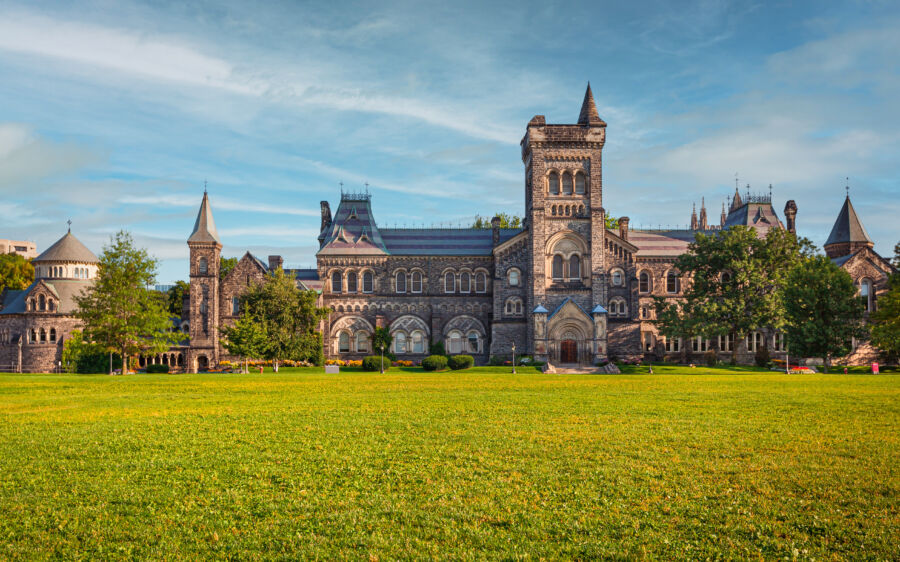
Montreal stands out with its mix of English and French universities, including McGill University and Université de Montréal. The city’s lower tuition rates attract many international students, especially from French-speaking countries.
Toronto’s university scene features the prestigious University of Toronto, ranked among the world’s top institutions. York University and Ryerson University add to the city’s diverse academic landscape.
Both cities provide strong research facilities and specialized programs. Montreal’s bilingual environment gives students unique language-learning opportunities, while Toronto’s connections to major industries create valuable internship possibilities.
Health Services and Safety Records

Montreal’s healthcare system features renowned hospitals like the McGill University Health Centre. Wait times for medical services tend to be shorter compared to Toronto.
Toronto boasts world-class medical facilities, including the Hospital for Sick Children and Mount Sinai Hospital. The city has more specialized treatment centers and research institutions.
Safety ratings favor Toronto slightly, with lower crime rates in most categories. Both cities maintain well-staffed emergency services and modern medical equipment.
The public healthcare system works similarly in both places, but Toronto has more private healthcare options. Each city offers specialized clinics and wellness centers throughout their neighborhoods.
Climate and Weather Considerations
Toronto and Montreal both experience four distinct seasons, with Montreal facing slightly more extreme temperatures and heavier snowfall. These climate differences shape daily life and activities in each city.
Seasonal Variations and Activities

Montreal winters are colder and snowier than Toronto’s, with temperatures often dropping below -15°C (5°F). The city gets about 210cm of snow yearly – nearly double Toronto’s amount. This extra snow makes Montreal perfect for winter sports like skiing and ice skating.
Toronto’s winters are milder thanks to Lake Ontario’s warming effect. The city stays around -5°C (23°F) in winter, with less frequent deep freezes than Montreal. Snow doesn’t stick around as long here.
Summer temperatures reach similar highs in both cities, averaging 26°C (79°F). Montreal tends to feel more humid and sticky during heat waves. Each city sees about 2,000 hours of sunshine per year.
Impact of Climate on Lifestyle
The harsh Montreal winters push more activities indoors. The city has developed an extensive underground network of shops, restaurants, and walkways to help people avoid the cold. Many residents embrace winter by ice skating on outdoor rinks or hitting nearby ski slopes.
Toronto’s milder climate means outdoor activities can start earlier in spring and last longer into fall. The city’s streets and patios stay lively well into November most years.
Both cities come alive in summer with festivals and outdoor events. Montreal’s intense summer heat makes its public pools and splash pads very popular. Toronto’s waterfront location provides a natural cooling effect during hot spells.
Frequently Asked Questions
Toronto and Montreal each offer distinct advantages in food, culture, lifestyle, and urban experiences that shape daily life for residents and visitors. The cities maintain a friendly rivalry while celebrating their unique characteristics.
Which city offers a more diverse culinary experience, Toronto or Montreal?
Toronto’s food scene reflects its multicultural population with authentic ethnic restaurants from around the world. The city boasts multiple food districts like Chinatown, Little Italy, and Greektown.
Montreal’s cuisine centers on French-Canadian traditions and Jewish influences. The city is famous for smoked meat, poutine, and Montreal-style bagels.
Both cities feature bustling food markets. Toronto’s St. Lawrence Market focuses on local produce, while Montreal’s Jean-Talon Market specializes in Quebec-made products.
How do Toronto and Montreal compare in terms of cost of living and salaries?
Montreal offers lower housing costs and daily expenses compared to Toronto. Rent prices in Montreal run about 30% less than similar properties in Toronto.
Toronto generally provides higher salaries across most industries. The tech and financial sectors are particularly strong.
Montreal has higher taxes than Toronto, which partly offsets the lower living costs. Basic necessities like groceries and utilities cost less in Montreal.
In sports, how do the rivalries between Toronto and Montreal teams influence the cities’ cultures?
The Toronto Maple Leafs and Montreal Canadiens share one of hockey’s oldest and most intense rivalries. Game days bring the cities alive with team spirit.
Soccer fans pack stadiums when Toronto FC faces CF Montreal. These matches often reflect the cultural differences between the two cities.
Local sports bars fill up during any Toronto-Montreal matchup. The friendly competition extends beyond sports into civic pride.
When considering walkability and public transport, which city is more accessible for tourists and residents?
Montreal’s Metro system covers major attractions and neighborhoods efficiently. The underground city lets people walk between buildings during harsh weather.
Toronto’s TTC network includes subways, streetcars, and buses. The system reaches further into suburbs but can get crowded during rush hours.
Both cities offer bike-sharing programs and pedestrian-friendly areas. Montreal has more dedicated bike lanes throughout the city core.
Which city has a stronger presence of French language and culture?
Montreal operates primarily in French, with most signs, menus, and daily interactions happening in French first. English remains widely used as a second language.
French culture shapes Montreal’s art galleries, theaters, and festivals. The city maintains strong connections to its French heritage.
Toronto has some French influences but functions mainly in English. French services are available but not as prevalent as in Montreal.
Can you highlight the unique elements that differentiate the nightlife in Toronto and Montreal?
Montreal lets bars serve alcohol until 3 AM. It features distinct party districts like the Plateau and Crescent Street. The city’s nightlife has a European feel.
Toronto’s Entertainment District hosts major clubs and venues. The city offers rooftop bars with skyline views and diverse music scenes.
Each neighborhood in both cities has its own nightlife personality. Montreal tends toward intimate bars, while Toronto features more large-scale venues.
